Choosing a reliable gym turf factory requires evaluating their technical expertise, material quality, safety certifications, and production capabilities. Look for manufacturers offering comprehensive product specifications, third-party testing reports, and proven track records in artificial grass gym flooring solutions.
As an Artificial Turf Specialist with over a decade of experience in the fitness flooring industry, I’ve witnessed countless gym owners make costly mistakes when selecting turf suppliers. The difference between a reliable factory and an unreliable one isn’t just about price – it’s about safety, durability, and long-term performance. Early in my career, I helped a client who chose the cheapest gym track option available. Within six months, their indoor turf for gym was showing severe wear patterns, and they had to replace the entire installation at double the original cost.
A reliable gym turf factory should demonstrate deep technical knowledge about yarn characteristics, backing systems, and performance standards. They should provide detailed specifications including pile height measurements, stitch rates, and material compositions. For instance, a quality manufacturer will specify exact parameters like "62,500 stitches per square meter" rather than vague descriptions. This level of precision indicates serious manufacturing capabilities and quality control processes that separate professional turf gym suppliers from basic distributors.

The journey to finding the right supplier starts with understanding what separates professional manufacturers from basic suppliers, but this knowledge becomes truly valuable when you know how to evaluate specific performance indicators.
What key performance indicators define the perfect "armor" for your facility?
Key performance indicators for gym turf include wear resistance ratings, impact absorption levels, slip resistance coefficients, rebound characteristics, and fire safety classifications. These metrics determine how well your turf for gyms will perform under intensive training conditions and ensure user safety.
Performance indicators serve as the foundation for making informed decisions about sled turf and other specialized applications. From my experience as an Artificial Turf Specialist managing multiple fitness facility projects, I’ve learned that focusing on specific metrics rather than general claims helps identify truly superior products. The best manufacturers provide comprehensive testing data and explain how each indicator relates to real-world performance in artificial grass gym flooring applications.
Wear Resistance: The Ultimate Test for High-Intensity Training
Wear resistance determines how well your indoor turf for gym withstands constant use, equipment dragging, and foot traffic. Different materials show varying performance levels under stress. Polyethylene (PE) fibers offer excellent softness and appearance but may show wear faster than nylon alternatives. Polypropylene (PP) provides good durability at lower costs but lacks the premium feel of other materials. Nylon delivers superior wear resistance but comes at higher price points.
Weaving density directly impacts durability in gym track applications. Higher stitch rates, such as 62,500 stitches per square meter, create denser surfaces that distribute wear more evenly. Lower density options around 40,000 stitches per square meter may be suitable for light-use areas but won’t withstand heavy sled turf operations. When evaluating wear resistance, I always advise clients to request specific testing data rather than accepting general durability claims.
Material composition affects wear patterns significantly in turf gym installations. Pure polyethylene systems like our GYMXM-20 model show consistent wear characteristics across the surface. Mixed material systems combining PE straight fibers with PP curled yarns, such as the GYMZQ-25 specification, offer balanced performance with strategic wear distribution. The key is matching material properties to your specific usage patterns and intensity levels.
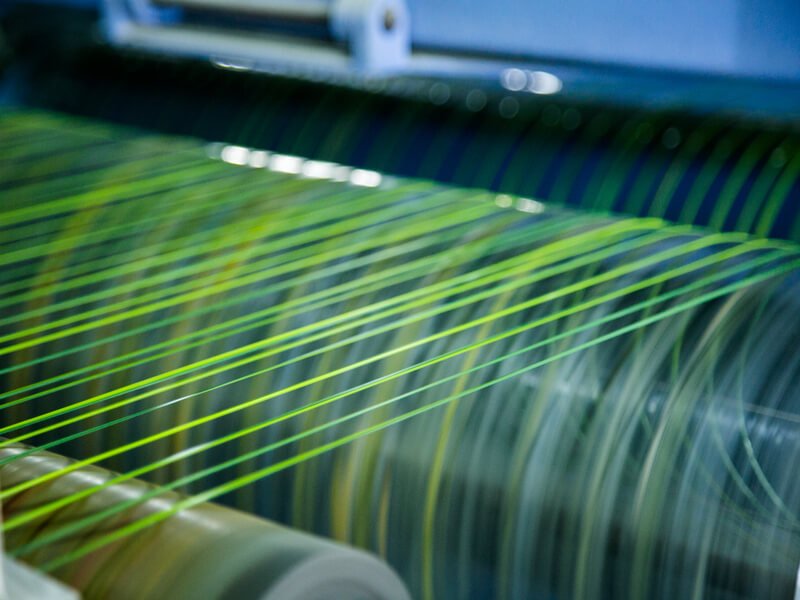
Impact Absorption: Protecting Joints While Enhancing Performance
Impact absorption capability determines how effectively your turf for gyms protects users during high-impact activities. Yarn structure plays a crucial role in cushioning performance. Curled monofilament fibers create natural spring action that absorbs impact energy. Straight fibers provide stability but offer less cushioning effect. The combination of both fiber types optimizes protection and performance characteristics in artificial grass gym flooring systems.
Fill materials and backing systems contribute significantly to impact absorption in gym track installations. Polyurethane foam backing, available in 5-10mm thickness options, enhances cushioning properties substantially. Standard SBR latex coating provides basic impact absorption suitable for moderate activities. No-infill systems rely entirely on yarn structure and backing composition for cushioning performance.
Testing standards help evaluate impact absorption objectively in indoor turf for gym applications. Professional facilities should require compliance with EN 15330-1:2013 standards for sports surfaces. Impact force reduction percentages indicate cushioning effectiveness. Systems achieving 10-15% force reduction suit basic fitness activities, while 20-25% reduction levels support high-impact training programs. Understanding these measurements helps match products to specific application requirements.
Different zones within your facility may require varying impact absorption levels. High-impact areas near plyometric stations need maximum cushioning properties from specialized sled turf systems. General workout zones can use moderate absorption systems. Walking paths and stretching areas may use basic cushioning options. This zone-based approach optimizes both performance and budget allocation across your turf gym installation.
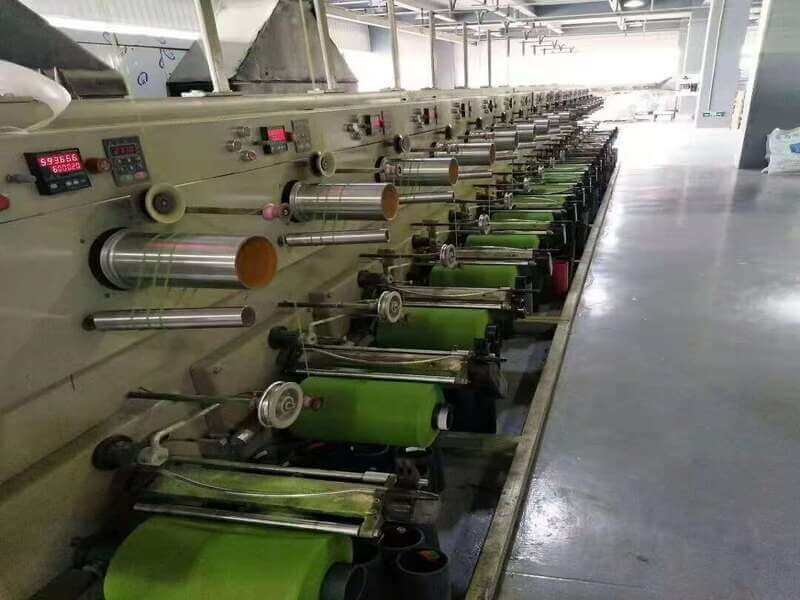
Slip Resistance: The First Line of Defense for Safe Training
Surface texture design influences slip resistance performance significantly in artificial grass gym flooring. Curled yarn structures create natural grip patterns that enhance traction. Smooth monofilament surfaces may require additional texturing for optimal safety. The interplay between fiber shape, density, and backing characteristics determines overall slip resistance properties in turf for gyms applications.
Dry and wet conditions create different slip resistance challenges for gym track surfaces. Quality indoor turf for gym maintains consistent traction across varying moisture levels. R12 slip resistance ratings indicate excellent performance in both dry and wet conditions. Lower ratings may be acceptable for climate-controlled environments but insufficient for areas with potential moisture exposure.
Certification standards provide objective slip resistance measurements for turf gym installations. SGS anti-slip testing offers reliable performance validation. As an Artificial Turf Specialist, I always require documented test results rather than accepting manufacturer claims. Regular re-testing ensures continued performance as surfaces age and wear patterns develop in sled turf applications.
Proper installation affects slip resistance performance across all artificial grass gym flooring types. Adequate adhesive coverage prevents movement that could compromise traction. Edge sealing eliminates lifting points that create trip hazards. Professional installation following manufacturer guidelines ensures optimal safety performance throughout the surface lifespan.
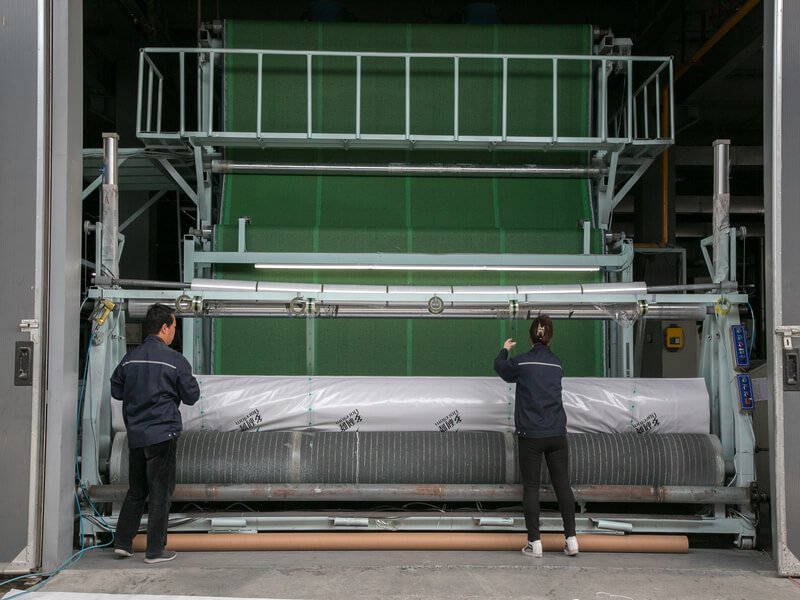
Rebound Characteristics: Delivering Comfort and Athletic Feedback
Yarn material properties directly influence rebound performance in turf for gyms systems. Polyethylene fibers offer excellent recovery characteristics that maintain consistent surface feel over time. Nylon provides superior rebound properties but requires higher investment. Polypropylene offers basic rebound performance suitable for budget-conscious gym track applications.
Fiber configuration affects rebound consistency in indoor turf for gym installations. Curled monofilament structures create spring-like action that enhances energy return. Dense pile configurations with 62,500 stitches per square meter provide uniform rebound across the entire surface. Lower density systems may create inconsistent feel that affects athletic performance in turf gym environments.
Fill layer contributions impact overall rebound characteristics in artificial grass gym flooring systems. Polyurethane foam backing enhances natural fiber rebound properties. Thicker foam layers (10mm) provide maximum rebound enhancement for specialized sled turf applications. Standard latex backing offers basic rebound support. The combination of yarn properties and backing systems determines total rebound performance.
Long-term rebound durability requires evaluation of material fatigue characteristics. Quality systems maintain consistent rebound properties throughout their service life. Inferior materials show declining rebound performance that affects user experience. As an Artificial Turf Specialist, I always request accelerated aging test data to predict long-term rebound consistency and overall system durability.
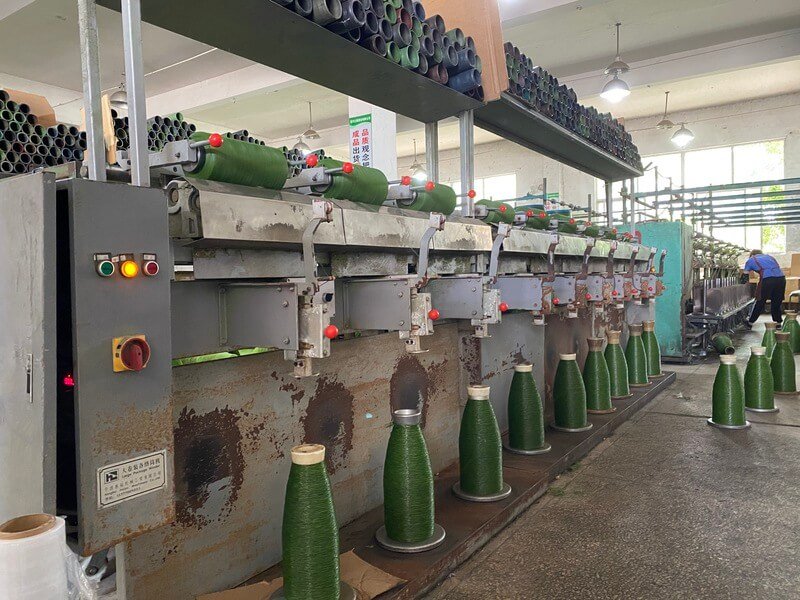
Fire Safety Rating: Essential Safety Requirements for Facility Protection
Fire safety classifications ensure compliance with building codes and insurance requirements for turf for gyms installations. Ef1 ratings indicate excellent fire resistance performance suitable for most commercial applications. This classification demonstrates that materials meet stringent European safety standards for indoor turf for gym surfaces.
Material composition affects fire resistance properties significantly in gym track applications. Polyethylene and polypropylene fibers require flame retardant treatments to achieve acceptable safety ratings. Quality manufacturers integrate fire resistance into the base material rather than applying surface treatments that may degrade over time in turf gym environments.
Building codes specify minimum fire safety requirements for different facility types using artificial grass gym flooring. Commercial gyms typically require Bfl-s1 or equivalent ratings. Educational facilities may need higher classifications. Understanding local requirements prevents costly compliance issues during installation and inspection processes for sled turf systems.
Testing documentation provides verification of fire safety compliance. SGS fire resistance testing offers internationally recognized validation. Certificates should specify exact test methods and results rather than general compliance statements. Regular testing updates ensure continued compliance as standards evolve and materials age in indoor turf for gym applications.
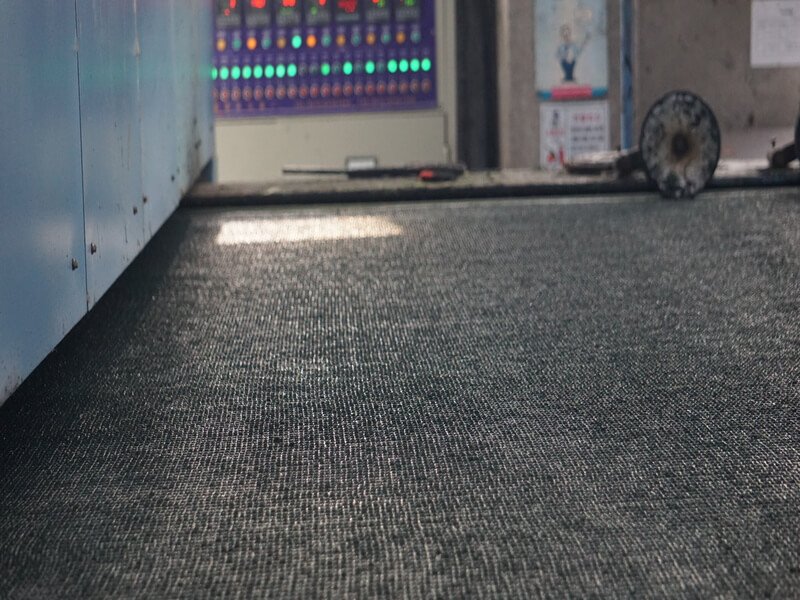
Decoding Gym Turf DNA: Density, Height, and Material Differences
Gym turf performance depends on three critical factors: pile density affecting durability and appearance, pile height influencing comfort and maintenance, and material composition determining specific performance characteristics. Understanding these elements helps match products to specific facility requirements and usage patterns.
The relationship between density, height, and materials creates the unique performance profile of each turf gym system. During my years as an Artificial Turf Specialist specifying artificial grass gym flooring installations, I’ve learned that these three factors work together to determine everything from user comfort to maintenance requirements. Getting this combination right means the difference between a surface that performs beautifully for years and one that disappoints from the start.
Density: Determining Fullness and Durability
High-density construction offers superior durability and appearance retention in turf for gyms applications. Systems with 62,500 stitches per square meter create lush, full surfaces that maintain their appearance under heavy use. The dense fiber arrangement distributes wear forces across more individual yarns, extending overall system life. These high-density systems excel in high-traffic areas where appearance and durability are paramount for indoor turf for gym installations.
Low-density alternatives provide economic advantages for specific gym track applications. Systems with 40,000 stitches per square meter offer acceptable performance at reduced costs. These configurations work well in moderate-use areas or budget-conscious installations. However, they may show wear patterns more quickly and require more frequent replacement in high-traffic zones of artificial grass gym flooring systems.
Selecting appropriate density requires analyzing specific usage patterns and performance expectations for sled turf applications. High-intensity training facilities benefit from maximum density configurations. General fitness areas can use moderate density systems effectively. Storage and low-traffic zones may use basic density options. This strategic approach optimizes both performance and investment efficiency across your turf gym installation.
Density affects maintenance requirements significantly in indoor turf for gym environments. Higher density systems trap less debris and clean more easily. Lower density configurations may require more frequent deep cleaning to maintain appearance. Understanding these maintenance implications helps calculate total ownership costs beyond initial purchase prices for turf for gyms systems.
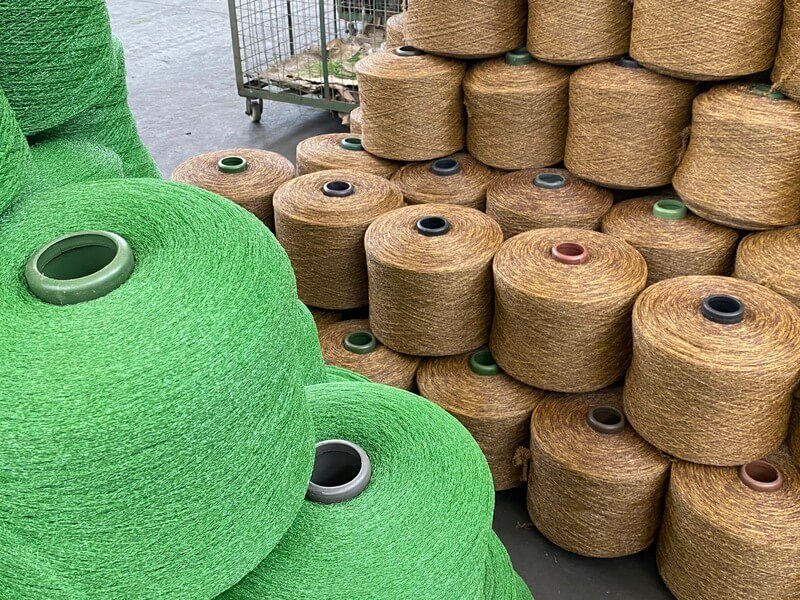
Pile Height: Influencing Feel, Appearance, and Cleaning
Short pile height systems offer specific advantages for intensive use applications in gym track environments. 13-15mm effective heights after curling provide excellent stability for equipment use while maintaining comfort. These systems clean easily and show minimal matting under heavy traffic. Short pile configurations excel in weight training areas and high-equipment zones of artificial grass gym flooring installations.
Longer pile heights enhance comfort and visual appeal in turf gym applications. 20mm straight heights (curling to approximately 15mm effective) provide enhanced cushioning for floor exercises and stretching activities. These systems create premium appearance characteristics that enhance facility aesthetics. However, they may require more maintenance attention to prevent matting in indoor turf for gym environments.
Pile height selection affects cleaning and maintenance procedures for sled turf systems. Shorter heights allow easier debris removal and faster cleaning cycles. Longer heights may trap more particles but provide better hiding of minor stains. Regular brushing helps maintain appearance regardless of pile height selection in turf for gyms installations.
Cost considerations include both initial investment and ongoing maintenance expenses for artificial grass gym flooring. Longer pile systems typically cost more initially but may provide enhanced user satisfaction. Shorter pile options offer lower initial costs and reduced maintenance requirements. Balancing these factors requires considering total facility goals and budget constraints for your gym track project.
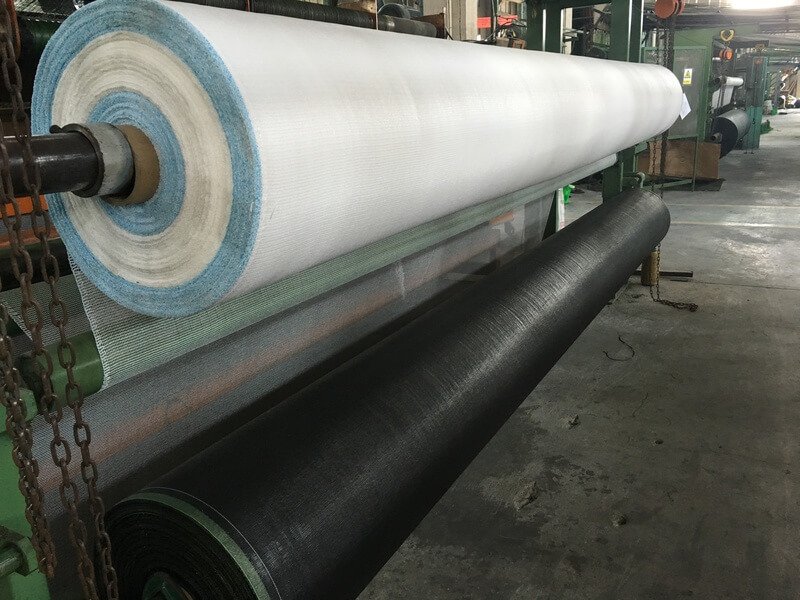
Material Showdown: PP, PE, and Nylon Championship
Polypropylene (PP) systems offer cost-effective solutions with reliable basic performance for turf gym installations. PP fibers provide good durability and acceptable comfort levels at competitive prices. These systems work well for budget-conscious installations where basic performance meets requirements. However, PP may show more significant wear patterns over time and offers less softness than premium alternatives in indoor turf for gym applications.
Polyethylene (PE) systems deliver superior comfort and appearance characteristics in artificial grass gym flooring. PE fibers create softer surfaces that enhance user experience significantly. These materials maintain excellent appearance retention and offer good durability for most applications. PE systems represent the optimal balance of performance and value for many commercial turf for gyms installations.
Nylon systems provide maximum performance capabilities at premium pricing for gym track applications. Nylon fibers offer exceptional wear resistance, superior rebound characteristics, and excellent heat resistance. These systems excel in high-performance applications where maximum durability justifies higher investment in sled turf systems. However, nylon’s higher cost may exceed budget requirements for many installations.
Mixed material systems combine benefits of different fiber types strategically in turf gym environments. PE straight fibers provide stability while PP curled yarns enhance comfort. These hybrid approaches optimize performance characteristics while managing costs effectively for indoor turf for gym projects. Understanding material combinations helps identify systems that match specific performance requirements precisely across various artificial grass gym flooring applications.
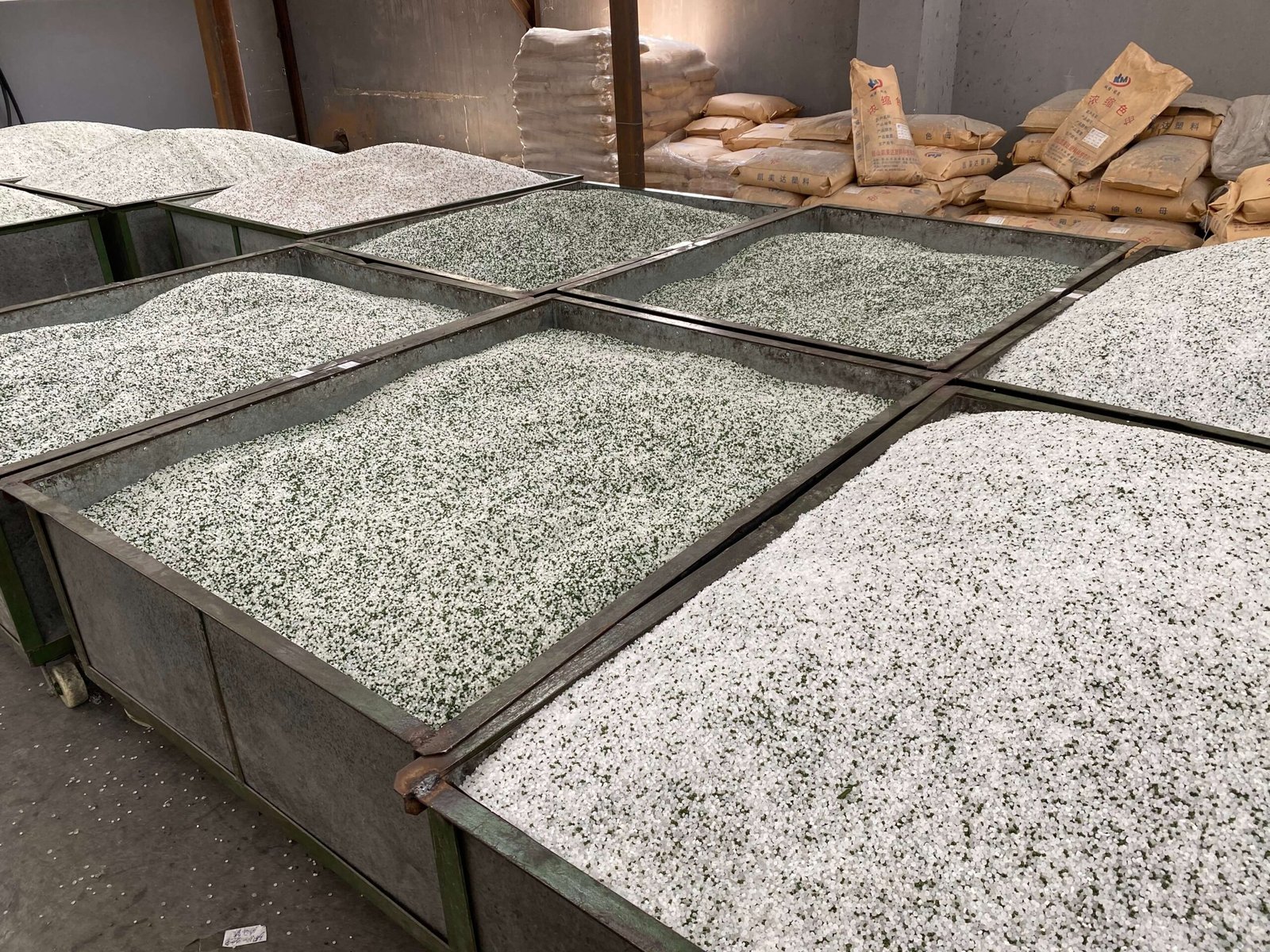
Environmental and Health Commitment: Gym Turf’s Green Promise
Modern gym turf systems prioritize environmental safety through REACH compliance, non-toxic material selection, and sustainable production processes. Quality manufacturers provide comprehensive testing documentation proving their products meet or exceed international health and safety standards for indoor air quality and user contact safety.
Environmental responsibility and health safety have become non-negotiable requirements for modern fitness facilities. As an Artificial Turf Specialist, I’ve witnessed the evolution of industry standards from basic functionality to comprehensive environmental compliance. Today’s facility owners rightfully demand proof that their artificial grass gym flooring contributes to healthy indoor environments rather than compromising them.
Non-Toxic Safety: Creating Worry-Free Training Environments
Raw material safety standards ensure user health protection throughout product lifecycles in turf for gyms applications. REACH compliance demonstrates that all materials meet European Union safety requirements for chemical substances. This comprehensive testing covers hundreds of potentially harmful substances, providing confidence in material safety. Quality manufacturers maintain current REACH certifications and update testing as regulations evolve for indoor turf for gym installations.
Production process controls prevent contamination during manufacturing of gym track systems. Closed-loop systems minimize chemical exposure and waste generation. Quality control testing verifies that finished products remain free from harmful substances. These manufacturing safeguards ensure that turf gym installations contribute to healthy indoor environments rather than compromising air quality.
Finished product safety testing addresses potential off-gassing and contact safety concerns in sled turf applications. VOC (Volatile Organic Compound) testing ensures minimal chemical emissions that could affect indoor air quality. Skin contact safety testing verifies that direct user contact poses no health risks. These comprehensive safety evaluations provide peace of mind for facility operators and users of artificial grass gym flooring systems.
Long-term safety considerations include material stability and degradation characteristics for turf for gyms installations. Quality systems maintain safety performance throughout their service lives without developing harmful breakdown products. Inferior materials may release concerning substances as they age and degrade. Understanding long-term safety profiles helps ensure continued user protection in indoor turf for gym environments.
Authoritative Testing Reports: Powerful Proof of Quality and Safety
Third-party testing organizations provide independent verification of product performance and safety claims for gym track applications. SGS, Intertek, and similar internationally recognized laboratories offer credible testing services. These organizations maintain strict testing protocols and quality standards that ensure reliable results. Manufacturer-provided testing may lack the objectivity necessary for confident decision-making in turf gym projects.
Comprehensive testing reports should cover multiple performance and safety categories for artificial grass gym flooring systems. Fire resistance, slip resistance, wear performance, and chemical safety testing provide complete product evaluation. Individual test results mean less than comprehensive testing programs that address all relevant performance factors in sled turf applications.
Testing report interpretation requires understanding specific test methods and result significance for turf for gyms installations. Numerical results provide objective comparison between different products. Certification marks indicate compliance with specific standards. As an Artificial Turf Specialist, I help clients understand what these results mean in practical terms for their indoor turf for gym projects.
Regular testing updates ensure continued compliance as products age and standards evolve in gym track environments. Initial testing provides baseline performance verification. Ongoing testing confirms that performance characteristics remain consistent throughout product lifecycles. This continuous validation approach provides confidence in long-term product reliability for artificial grass gym flooring installations.

Wnioski
Choosing reliable gym turf factories requires evaluating technical expertise, safety certifications, and comprehensive product documentation to ensure long-term performance success.
Ready to Transform Your Facility?
Don’t let subpar flooring compromise your facility’s performance and safety. As your trusted Artificial Turf Specialist, I’m here to help you make the right choice for your specific needs. Whether you’re planning a new turf gym installation, upgrading your existing gym track, or exploring specialized sled turf options, we have the expertise and products to exceed your expectations.
Take action today:
- Get instant pricing on premium artificial grass gym flooring systems
- Request free samples of our top-performing turf for gyms products
- Schedule a consultation with our technical experts
- Receive customized recommendations for your indoor turf for gym project
